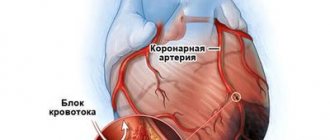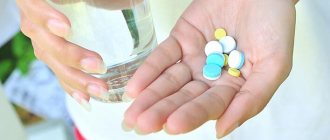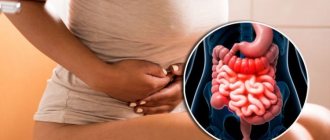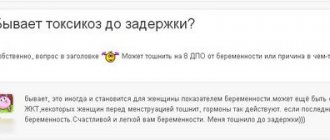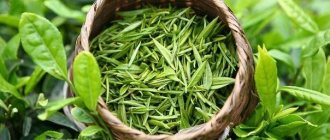What kind of lifestyle should one have with pancreatitis and how long do they live with chronic pancreatitis - these are two questions that every patient asks himself when he learns about the diagnosis.
In chronic pancreatitis, the patient’s lifestyle plays a decisive role.
What's a bit of a problem?
“Acute pancreatitis is an inflammation of the pancreas that occurs due to a number of internal and external factors, including alcohol consumption, fatty, spicy and fried foods, cholelithiasis,” says the head of the operating unit of the Medincenter hospital (a branch of GlavUpDK at the Ministry of Foreign Affairs Russia), surgeon of the highest qualification category Dmitry Chudaev .
The pancreas produces a large amount of juice, the enzymes of which are necessary for digesting food, the surgeon says. In acute pancreatitis, pancreatic cells are damaged by prematurely activated enzymes. As a result, they begin to digest the tissue of the gland itself, provoking an inflammatory process.
Further more. “The inflammatory process in the pancreas can spread to surrounding organs and tissues, damaging them to the point of necrosis (death),” says Dmitry Chudayev. In this case, as the specialist emphasizes, intoxication of the entire body occurs, and severe dysfunction of vital organs develops, which can lead to death.
In addition, when the inflamed tissues of the gland and retroperitoneal fatty tissue become infected, an abscess (abscess) forms, requiring urgent surgical intervention. The mortality rate for acute pancreatitis ranges from 7 to 15%, explains surgeon Chudaev.
Intestinal bleeding and cerebral edema. The doctor talks about the dangers of acute pancreatitis Read more
Diet for chronic pancreatitis
The doctor prescribes a diet for the patient. However, there are general recommendations that are given to absolutely all patients.
The goal of therapeutic nutrition is to give the digestive system minimal stress and reduce pain and nausea.
First of all, the recommendations concern diet.
It is necessary to eat often, but in small portions, 200-250 g each. The optimal regimen for such patients is eating 5 to 6 times a day, with a break between meals of at least 2.5 hours, but no more than 3 hours .
Product processing is also important. Grinded products reduce the inflammatory process. A person can eat food cut into larger pieces; the food must be chewed well. The best dishes are baked, stewed, boiled.
The diet is predominantly protein. A person should receive from 140 to 150 g of such food per day.
It is also important to adhere to the drinking regime. Patients are recommended to drink at least 2 liters of clean water per day, 2-3 sips every 30 minutes.
What to exclude
First of all, you need to exclude carbohydrate-rich and fatty foods. This is due to the fact that it puts a greater load on the pancreas. The maximum permissible daily dose of carbohydrates is no more than 300 g, and fats - no more than 70 g.
The second place among prohibited products is occupied by products with juice properties. These include various soups, borscht and broths based on meat, mushrooms and fish. Spicy, smoked, very salty, sour, spicy foods are excluded.
Doctors have compiled a list of foods that patients with chronic pancreatitis should forget about forever:
- fatty meats (lamb, poultry, pork);
- fatty fish (catfish, stellate sturgeon, carp, sturgeon);
- offal;
- canned food;
- sausage, frankfurters, lard;
- caviar;
- high-fat dairy products (sour cream, cream, boiled eggs);
- mayonnaise, ketchup, mustard, etc.;
- cereals (millet, corn, barley), all legumes;
- vegetables (turnips, eggplants, cabbage, sorrel, tomatoes, peppers, radishes);
- sour fruits and berries;
- confectionery products (chocolate, cocoa, jam, jam);
- bakery products (cakes, pancakes, cookies);
- drinks (coffee, any carbonated water, juices, tea).
The list of prohibited foods is quite extensive, but only such a diet guarantees good health.
Risk group
At risk, as Dmitry Chudayev says, are people with diseases of the biliary tract, cholelithiasis, and patients with acute surgical diseases of the abdominal organs. In addition, among the reasons for the development of pancreatitis, factors such as:
- poisoning;
- injuries;
- viral diseases;
- operations and endoscopic manipulations.
So in these cases, you should listen carefully to yourself and undergo timely examinations with a doctor to eliminate the risk of developing pathology.
“For prevention purposes, it is recommended to avoid alcohol, fatty, spicy and fried foods, especially in large quantities,” advises surgeon Chudayev.
Article on the topic
Spare the pancreas! How to protect yourself from pancreatitis
Lifestyle of patients with chronic pancreatitis
With chronic pancreatitis, the lifestyle that a sick person leads is very important.
If a person wants to prolong his life, he must lead an exceptionally healthy lifestyle and adhere to a special diet.
In this case, the patient can live a productive, active and rich life. Even if chronic pancreatitis struck a person in childhood, with the right lifestyle, he may well have time to raise his own grandchildren, that is, life expectancy will be quite high.
Many patients wonder how to live further with such a serious illness. The first thing every person with such pancreatitis must learn is that his condition depends entirely on how he relates to his health. In particular, we are talking about the following useful habits:
- refusal to use alcohol, tobacco and drugs;
- moderate exercise;
- positive attitude, optimism and stress resistance.
A person must live his entire life observing such necessary measures.
How to recognize the problem?
“With pancreatitis, pain appears in the upper abdomen, often of a girdling nature. It is of a pronounced permanent nature, intensifies in the supine position and after eating. Accompanied by nausea and vomiting,” says Dmitry Chudaev.
If such unpleasant symptoms appear, you should consult a doctor. Naturally, first of all, they will conduct an examination and collect an anamnesis, and then the specialist will offer a special set of examinations. “As part of the diagnosis of the disease, multislice computed tomography, magnetic resonance imaging and ultrasound examination of the abdominal organs and retroperitoneal space are performed. In a number of cases, gastroscopy can also provide valuable information. Be sure to examine the level of leukocytes, amylase and lipase in the blood,” explains the specialist.
It is worth considering that in case of acute pancreatitis, hospitalization in a surgical hospital is indicated, in severe cases - immediately in the intensive care unit, the doctor warns. We must also remember that all patients, without exception, are prescribed bed rest, cold on the upper abdomen and complete fasting.
What hurts on the left side? What are the dangers of problems with the pancreas Read more
Pancreatitis: a disease of the 21st century
Among diseases of the abdominal organs, acute pancreatitis is in third place in frequency after acute forms of appendicitis and cholecystitis. As a rule, attacks of this disease occur in young people from 25 to 55 years old, especially lovers of fatty and spicy foods, as well as alcohol.
There is also the so-called idiopathic pancreatitis, the cause of which cannot be established, since the patients did not indulge in either gastronomic excesses or alcohol abuse and did not even suffer from cholelithiasis. This form of the disease is recorded in 6–10% of patients. As for smoking, as medical practice shows, it does not directly lead to pancreatitis, but it is a significant risk factor for the development of pancreatic cancer. Mortality from chronic and acute pancreatitis is quite high. 20% of patients die within the first 10 years after diagnosis, 50% within the next 20 years. Death occurs from purulent complications or from secondary infection and disorders of the digestive function of the gastrointestinal tract.
Basic Anatomy of the Pancreas
The pancreas is located behind the body of the stomach, and its posterior surface is adjacent to the vertebrae. The gland is firmly fixed in its place: in front by the abdominal organs, in the back by the spinal column and various ligaments going to it from neighboring formations. All this protects it from traumatic injuries: ruptures and injuries to this organ are extremely rare. Adjacent to the gland from different sides are the duodenum, the abdominal aorta and its large branches, the portal vein, the stomach, the liver, the gall bladder and its ducts, and the spleen. Due to such a close arrangement of organs relative to each other, the inflammatory process can freely spread from the pancreas to all these organs and vice versa.
The pancreas has three lobes: head, body and tail. The gland contains clusters of cells (the so-called islets of Langerhans), which in turn consist of two types of cells: some secrete sugar, which lowers the hormone insulin, into the blood, others secrete sugar, which increases the hormone glucagon. In other cells of the gland, digestive enzymes are formed in an “inactive form” (trypsin, chymotrypsin, lipase, amylase, etc.), which, when food enters, are released through the duct system into the cavity of the duodenum, where they are “activated” and are able to dissolve all organic substances. The pancreatic duct in most cases merges with the bile duct along the way, forming one common duct. People who have a common duct for the gallbladder and pancreas more often develop pancreatitis, since in this case secondary infection often occurs against the background of cholecystitis or cholelithiasis (blockage of the duct with a gallstone, cholecystopancreatitis).
In case of various disturbances in the outflow of enzymes through the ducts, they manage to become active even before entering the intestines and begin to “digest” the gland itself. This leads to pancreatitis, and sometimes to the death of a significant part of its cells - pancreatic necrosis. No other organ can take over all the functions of the pancreas. Therefore, the death of its cells is an irreparable blow to the body (and extensive pancreatic necrosis is completely life-threatening).
Causes of pancreatitis
- Alcohol abuse. Approximately 50% of all cases of pancreatitis were caused by this. In response to alcohol intake, the concentration of enzymes in pancreatic juice increases. It moves more slowly through the ducts and can be activated before reaching the intestines. In addition, alcohol causes spasm of the muscles located between the pancreas and duodenum. Normally, it should allow enzymes into the intestines, but block the exit of digested food from it. After abusing alcohol, it may not open in time, blocking pancreatic juice in the ducts. With daily consumption of 60 to 80 ml of alcohol over 10-15 years, almost 100% of people will develop chronic pancreatitis. Unbalanced diet with a lot of fatty, spicy foods in the diet. It is especially dangerous if a person eats on an empty stomach and accompanies his meal with alcohol. It is no coincidence that attacks of acute pancreatitis and exacerbation of chronic pancreatitis often occur after the holidays.
- Cholelithiasis. It is its complication that accounts for approximately 20% of all cases of pancreatitis. If you draw a schematic diagram of the bile duct and pancreatic duct, they will look like rivers on a map. Both “streams” flow into the “sea” - the duodenum. In a small area in front of it, they “merge” together, forming a common channel. If a stone travels along the bile duct and gets into this part, it can block the “gate” to the pancreas, causing stagnation of enzymes.
- Abdominal injuries, inflammatory diseases of any abdominal organ.
- Infections. For example, viral hepatitis. In some cases, pancreatitis can develop as a complication of the flu.
Depending on the course of the disease, pancreatitis is divided into:
- acute pancreatitis,
- chronic pancreatitis, a more stable disease in which remission is replaced by exacerbation.
Acute pancreatitis
The first and most important sign of inflammation of the gland is pain. It is intense, radiating to the back, right or left hypochondrium, and shoulder blades. With alcoholic pancreatitis, the pain is girdling in nature. Pain is caused by drinking alcohol or fatty fried foods in large quantities. It is often not possible to eliminate pain even with narcotic analgesics. With chronic inflammation, pain is observed constantly, during periods of exacerbation they become more pronounced.
The second sign of pancreatitis is vomiting that occurs at the height of pain. A distinctive feature is that it does not bring relief. In this case, the patient may feel the bitter taste of the vomit.
Dyspeptic disorders: bloating (flatulence), feeling of heaviness, bitter taste in the mouth, belching. The most common symptom is flatulence. This is due to increased gas formation due to non-digestion of food fats. Since intestinal paresis is observed with pancreatitis, another common complaint is the absence or retention of stool.
In some cases, icteric staining of the sclera, mucous membranes and skin is observed.
Symptoms of intoxication include weakness, headache, and increased body temperature. In severe forms, the patient may have a fever.
In severe cases, the patient may have impaired consciousness. Body temperature reaches 39-40 C. The skin is pale or bluish. There is frequent shallow breathing, rapid heartbeat, and blood pressure is reduced to critical levels.
If you have symptoms of acute pancreatitis, you should urgently call an ambulance. This disease itself poses a real threat to life. In addition, its manifestations are similar to attacks of appendicitis, perforated gastric ulcers and myocardial infarction, which also require urgent medical attention.
Before the ambulance arrives:
- refuse food and drink - they contribute to additional irritation of the pancreas;
- take a horizontal position and try to relax your abdominal muscles - this will slightly reduce the pain;
- apply a heating pad with cold water or an ice pack wrapped in a towel to the sore spot;
- do not take any medications - they blur the clinical picture and complicate diagnosis.
To make a correct diagnosis in a hospital, you will need to undergo a number of diagnostic procedures: ultrasound, FGDS, radiography of the abdominal organs and others (please do not refuse them!). In controversial cases and when diagnosis is difficult, a laparoscopic examination is prescribed: with the help of special optical equipment, you can see with your own eyes all the processes occurring in the affected gland. If the pathological process can be immediately eliminated (remove a stone, cut adhesions or strictures), then this is done during laparoscopy.
The main principle of treating acute pancreatitis can be expressed in three words - cold, hunger and rest. You will have to abstain from food for several days; only still mineral water is allowed (not always). Bed rest is required. In case of moderate and severe acute pancreatitis, the patient is sent to the intensive care unit. The duration and nature of treatment, fasting (full or partial) is determined by the doctor! To relieve pain, antispasmodics are prescribed in combination with non-steroidal anti-inflammatory drugs. In case of severe pain, they resort to narcotic analgesics; if this does not help, then a blockade of nerve trunks and plexuses is used.
During the inflammatory process, the body loses a lot of fluid. To replenish the volume of circulating blood and maintain stable blood pressure, infusions of solutions in a volume of up to 3-4 liters per day are prescribed.
To prevent infection and during an active infectious process, broad-spectrum antibiotics are prescribed.
In case of complicated pancreatitis (pancreatic abscess, fistulas, pancreatic necrosis), surgical intervention may be necessary. The purpose of the operation is to remove necrotic areas, cysts, fistulas or abscesses, as well as drainage of phlegmon.
Chronic pancreatitis
Has more subtle manifestations. During its course, two periods are usually distinguished: the initial period and the period of severe damage to the pancreas. Only 10–20% of patients experience CP in a painless form, while in the remaining 80–90% it manifests itself as a typical painful attack. Moreover, there are two scenarios. The first, or type A, are short painful attacks that repeat for ten days (no longer), followed by long pain-free periods. The second, or type B, is more common in chronic alcoholic pancreatitis and presents with longer, more severe attacks of pain separated by one to two months. With exacerbation of pancreatitis, the symptoms usually resemble those of an acute process. In addition, CP is accompanied by signs of pancreatic enzyme deficiency.
In the initial period, which lasts an average of 10 years, the main manifestation is pain, which most often occurs 15–20 minutes after eating. Errors in diet provoke unpleasant sensations. The pain may be accompanied by nausea, bloating, and loose stools. With the long-term existence of chronic pancreatitis, the death of pancreatic tissue occurs, and its ability to produce enzymes and hormones decreases. The pain becomes less pronounced, and most often absent altogether. Patients are concerned about pale and dry skin, fatigue, as well as other signs of hypovitaminosis. Periodic diarrhea, flatulence, and weight loss are also noted, even though appetite may remain normal.
When treating chronic pancreatitis, the patient may be prescribed pancreatic enzyme preparations and medications that reduce the secretion of gastric juice and inhibit the functioning of the diseased organ. Diet also plays a very important role.
- Limit the amount of fatty foods in your diet as much as possible.
- Eliminate all juiced foods: strong broths (not only meat and fish, but also vegetarian), fried and smoked foods, canned food, sausages, spicy snacks and seasonings, fruit juices.
- Also excluded are dishes rich in coarse fiber, primarily legumes and cabbage. You can eat potatoes, cauliflower, carrots, zucchini, pumpkin, and beets, but only boiled or baked and preferably pureed.
- Coffee, chocolate, cakes and cream pies, ice cream, alcohol, and carbonated drinks are prohibited.
- You can’t eat both cold and hot food – only when it’s warm.
- Liquid porridges (except millet and pearl barley), slimy soups, boiled lean meat (rabbit, chicken), omelet, and dietary cottage cheese are recommended.
- You need to eat in small portions: at least 6 times a day in small portions.
- It is recommended to drink unsweetened tea and still mineral water.
- In addition to following the diet, you additionally need to consume vitamins A, C, B1, B2, B12, PP, K, and folic acid.
See a doctor in a timely manner, take care of yourself!
Resuscitator, Department of A&R
Novopolotsk city hospital
A.S.Kurash

